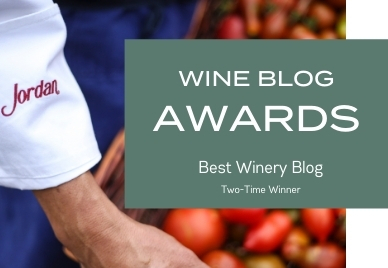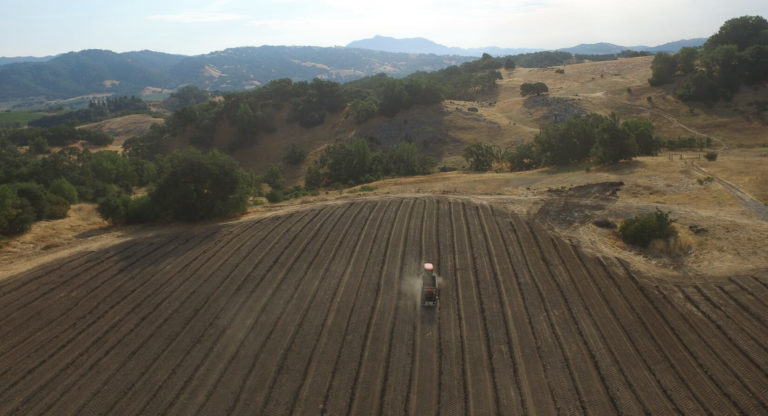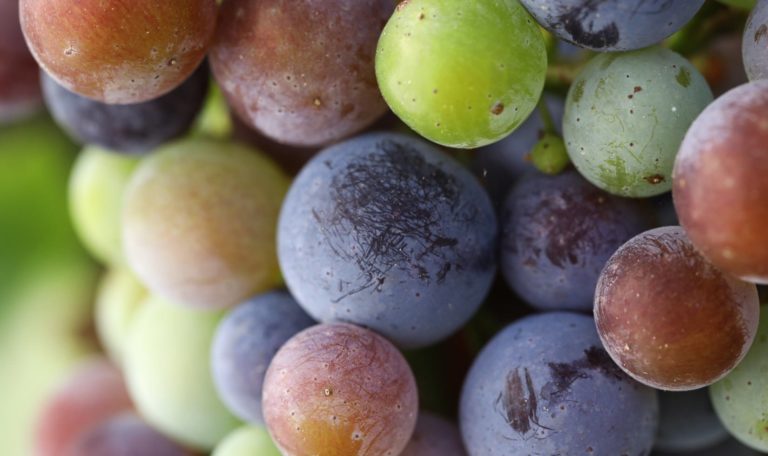How to Ripen Grapes on the Vine at Jordan
After the grapes bloom and tiny berries form into full grape clusters, it’s time for the important practice of leaf pulling, captured in the above video. A crucial step in how to ripen grapes on the vine, our vineyard team pulls leaves away from the area just above a grapevine’s cordon, or arms, where grape clusters grow. Removing targeted leaves allows for increased air movement and dappled light penetration. Cool breezes help keep pest pressure low, and the shaded light creates an ideal environment for the grapes to ripen without getting sunburned. Too much sun often creates overripe flavors (think prunes and raisins) our winemaking team considers undesirable. And grapes that receive too little sunshine will not develop the dark fruit characteristics consistently found in our style of Cabernet Sauvignon.
Typically grapegrowers pull leaves only on the side of the grapevine that receives morning sun, which generally has a lower light and heat intensity, and leave the vine canopy full on the afternoon sun side for increased shade during the hottest time of the day. Not always true at Jordan. Our hillside vineyard blocks are planted at different elevations, directions and exposures, which makes leaf pulling decisions much more strategic. Precision and balance are key.
For more information about grapevine maintenance, read How to Prune Grapevines for Quality Winemaking.



